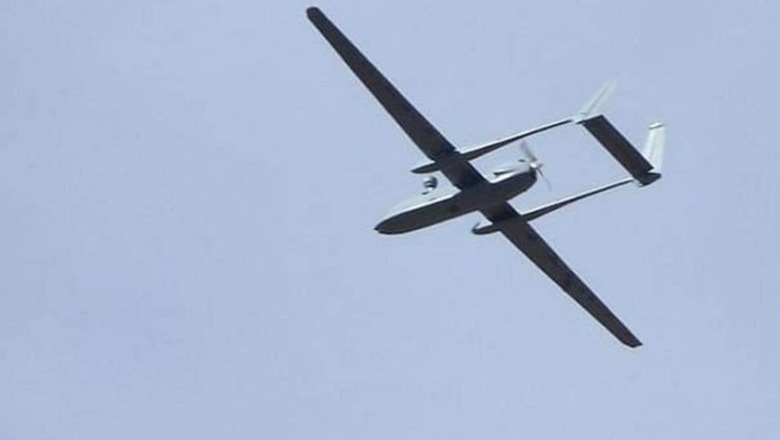
views
The Army is planning to induct indigenous light tanks—to be named Zorawar—in the next few years, in a bid to sharpen its mountain warfare prowess, top defence sources said on Thursday.
Additionally, it has also initiated a fresh case to procure Autonomous Surveillance and Armed Drone Swarm (ASAD-S) with high ranges to destroy targets in depth areas and plans to induct Surveillance and Targeting System (ISAT-S) for surveillance and engaging targets beyond the line of sight.
According to the sources, the Defence Acquisition Council (DAC) is expected to accord the Acceptance of Necessity (AoN) for the light tanks next month.
Earlier this year, the defence ministry had given in-principle approval for development of a light tank for the Army. This happened after the Army floated a Request for Information (RFI) last year to procure around 350 25-tonne light tanks under the Make in India initiative.
A defence source said the Indian Light Tank Zorawar has been designed to operate in high-altitude areas, marginal terrains to the island territories and will be “highly transportable for rapid deployment to meet any operational situation”.
The source added that the tanks will have in-built niche technologies, including AI, drone integration, active protection system, and a high degree of situational awareness, adding that it will boost the government’s Atmanirbhar Bharat initiative.
Need for Zorawar
As per defence sources, the Indian Light Tank is required to address sector-specific operational requirements, especially in high-altitude areas and marginal terrains.
“The agile tanks will have equal firepower as medium tanks, will be equipped with counter-drone systems to take care of aerial threats, communication systems and missiles,” the source quoted above said.
Sources in the know of the development said it is expected that the first prototype will be developed within the next two to three years by the Indian industry and any technology advancements will be further integrated into them.
The shortlisted Indian vendor will develop the tanks based on the qualitative requirements provided by the Army, which would be suitable for Indian conditions.
Requirement for swarm drones, smart munitions
The Army has procured swarm drones from two Indian start-up companies and has initiated a Make-II or industry-funded case for Autonomous Surveillance and Armed Drone Swarm (ASAD-S), which includes a version for high-altitude areas.
Swarm drones comprise a number of drones controlled from the same station—which can communicate among themselves as well as the control station—and can carry a variety of payloads in a single mission, and can take out enemy defences by undertaking collaborative attack.
“The swarming algorithms and Artificial Intelligence software enable them to operate autonomously with minimum human intervention and identify targets using AI software, thus speeding up the engagement process,” a defence source explained.
Sources said that drone technology has proved to be a force multiplier in military operations, adding that the application of swarm drones in various recent conflicts across the world especially in Armenia, Azerbaijan, Syria and strikes on oilfields in Saudi Arabia and the recent Russia-Ukraine conflict underlined the potency of this technology.
Taking note of the security situation at the northern and western borders of India, sources said induction of swarm drones will provide tactical commanders with surveillance inputs and they can engage varied targets such as artillery and air defence equipment and enemy command and control centres.
“It can be employed in both offensive and defensive operations, providing a decisive edge to the tactical commanders employing them,” the source said.
The Army also plans to develop and induct the Integrated Surveillance and Targeting System (ISAT-S) to overcome limitations faced by mechanised forces in irregular terrains and provide an “operational advantage and flexibility to the mechanised columns.”
The system will consist of a surveillance drone and smart munitions launched from vehicle platforms to execute various surveillance tasks and engage armoured fighting vehicle targets beyond the line of sight. The surveillance drone would fix and launch smart munitions automatically on identification of targets for precision kill.
Modernisation plans
The Army’s Armoured Corps has undertaken a modernisation programme with the induction of a range of indigenous platforms and ammunition as well as upgrading its Russian-origin existing tanks.
This includes procuring anti-tank guided missiles for the main battle tank Arjun. Development trials of the indigenous ATGM have already been successfully conducted.
The Army will also be inducting the state-of-the-art futuristic tank — Future Ready Combat Vehicle (FRCV) — in 2030, which will come along with performance-based logistics, transfer of technology, engineering support package, and other maintenance and training requirements.
The FRCV will integrate AI, drones, an active protection system, a high degree of situational awareness, and manned-unmanned teaming capability.
The Army has placed an order for 118 main battle tanks Arjun MK-1A which is integrated with 71 new features, and will acquire missile firing capability from the main gun.
Read all the Latest News India and Breaking News here




















Comments
0 comment